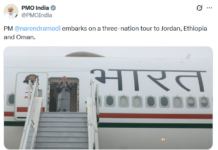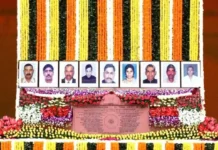 WASHINGTON: Indian-Americans, who are among the ethnic groups with highest per capita income, donate about USD 1 billion per year, far less than their potential of USD 3 billion philanthropy in the US, according to the results of a first-of-its-kind survey. The survey, which assessed the giving habits of Indian-Americans, concluded that the community donates in the range of 1.5 per cent of their income per year, compared to the average American donation rate of four per cent per year.
WASHINGTON: Indian-Americans, who are among the ethnic groups with highest per capita income, donate about USD 1 billion per year, far less than their potential of USD 3 billion philanthropy in the US, according to the results of a first-of-its-kind survey. The survey, which assessed the giving habits of Indian-Americans, concluded that the community donates in the range of 1.5 per cent of their income per year, compared to the average American donation rate of four per cent per year.
With a strong 4.1 million members, Indian-Americans have one of the highest median household incomes of any ethnic community in the US, and it is recognized as being well educated and socially aware. Released during the Indiaspora Philanthropy Summit at Georgetown University here, the Indiaspora-Dalberg Community Engagement Survey found that Indian-Americans volunteer at nearly double the national average but give substantially less financially, ultimately leaving significant social impact on the table.
“Today, we are discussing what lies next for Indiaspora in our role as a philanthropic catalyst, which is one of the core pillars of our mission. We are in the early stages of strategically planning what we should do to move the needle which is to say, increase the amount of Indian-American philanthropic giving in America and to India, and make it more effective,” said M R Rangaswami, Indiaspora founder. At over USD 3 billion dollars annually, the giving potential of Indian-Americans is enormous said Joe Dougherty, Dalberg Advisors’ regional director for the Americas.
To put it into context, the Bill and Melinda Gates Foundation distributes USD 4-5 billion across the entire globe every year. “Imagine the kind of impact the Diaspora could create if they met their giving potential. We hope that the results of this study help galvanize philanthropic efforts among this important and influential community,” Dougherty said.
The survey found Indian-Americans are passionate about social impact, has a diversity of interests, and are careful screeners and prolific volunteers. An Indian-American donor typically volunteers 220 hours each year, far exceeding the US national average of 130 hours annually. “However, the community must not get complacent the Indian Diaspora has a long way to go before we can call ourselves good givers,” the survey notes.
“We find there exists a large ‘giving gap’ in the realm of at least USD 2-3 billion. Further, we find a ‘passion-donation gap’, which means that the community does not necessarily give to those causes which it collectively claims to be most passionate about,” it said. The survey also found that women and men do not always rank the same causes in the same order of importance.
For example, 59 per cent of women listed gender equality as an area they are passionate about (tied with education as their top passion area) whereas only 26 per cent of men said the same (only 6th on their list of passion areas). Finally, the community tends to view its business and investment activities as being almost entirely independent of their philanthropic engagements, it said.
The survey also found credible evidence buttressing the pervasive notion that Indian Diaspora donors often lack trust in the philanthropic organizations they might wish to give to. “In other words, donors harbor a ‘trust deficit’, it said. PTI







